In Ajman, an air conditioner’s biggest enemy is the climate itself. The extreme heat, high humidity, and constant presence of fine dust and sand place immense and continuous stress on every component, leading to predictable and recurring failures. This continuous strain means AC maintenance isn’t optional—it’s essential for preventing costly breakdowns.
The 8 Most Common AC Problems and Their Root Causes
The environmental pressures in Ajman translate into a predictable list of system failures. Here is a detailed look at the most frequent AC nightmares:
1. The Catastrophic Loss of Cooling Efficiency
This is the most common and immediate indicator of a serious problem: the AC is running, but the air is warm, or the room never cools down to the set temperature.
- Refrigerant Leaks (The Vicious Cycle): This is the leading cause. The intense heat and pressure cause the system’s seals and copper tubing connections to degrade, leading to slow, continuous refrigerant loss. When the refrigerant charge is low, the AC cannot properly absorb heat. This forces the unit to run constantly, leading to excessive energy bills and, critically, placing extreme thermal stress on the compressor, hastening its failure.
- Contaminated Condenser Coils (The Insulating Blanket): The outdoor unit’s coils are designed to reject heat. Ajman’s fine dust and sand coat these coils, acting as a thick insulating blanket. This prevents the heat transfer process, causing the system’s internal pressure to skyrocket, drastically lowering cooling output, and leading to the unit overheating.
- Compressor Failure: If the unit is making no attempt to cool, the compressor may have failed completely. This costly breakdown is often the final result of ignoring chronic issues like low refrigerant or dirty coils for too long.
2. The Inescapable Water Leakage
Water dripping from the indoor unit or pooling around it is a frequent and highly destructive problem, capable of damaging ceilings, walls, and furniture.
- Clogged Condensate Drain Line (The Primary Culprit): High humidity creates copious amounts of condensation. This water mixes with the ever-present dust and airborne biological growth (algae/fungi), forming a thick, gelatinous sludge that completely blocks the narrow drain line. When blocked, the water backs up and overflows the internal drain pan.
- Frozen Evaporator Coils: A secondary but severe cause of leaks. When airflow is restricted (due to dirty filters) or the refrigerant is low, the evaporator coil temperature drops too low and freezes. When the unit cycles off, this large block of ice melts rapidly, generating a sudden deluge of water that the drainage system cannot handle, resulting in overflow.
3. Electrical Component Breakdown
The continuous, high-amperage demands of starting and running the powerful compressor and fans under extreme heat cause frequent electrical failures.
- Capacitor Failure: Capacitors are essential electrical storage devices that provide the high-energy jolt needed to start the motors. They are under immense strain in Ajman and commonly fail, causing the compressor or outdoor fan to fail to start (the unit will hum but not run) or short-cycling (turning on and off rapidly).
- Faulty Thermostats and Sensors: Constant exposure to high heat can damage the sensitive wiring and sensors within the thermostat and the internal unit. A malfunctioning sensor may cause the unit to read the wrong temperature, leading to erratic cooling, or prevent it from turning on altogether.
4. Excessive Energy Consumption and High Bills
A sudden and unexplained spike in your utility bill is often the first, most reliable warning sign of an underlying AC problem.
- Overworked Components: Any of the above problems—dirty coils, low refrigerant, or a faulty fan motor—force the system to work harder and longer to meet the thermostat setting. The system runs constantly, consuming far more power than is necessary.
- Poor Insulation and Leakage: Beyond the unit itself, poor ductwork insulation or gaps around windows and doors allow cooled air to escape, forcing the AC to operate non-stop.
5. Foul Odors and Compromised Air Quality
A musty, stale, or moldy smell emanating from the vents is a health hazard and a severe maintenance issue.
- Biological Growth (Mold and Mildew): The internal environment of the AC—dark, damp, and warm—is the perfect breeding ground for mold, mildew, and bacteria. These colonies thrive on the wet evaporator coil and in the stagnant water of the drain pan. Every time the AC runs, the unit circulates these spores and odors throughout the home.
- Dust Accumulation in Ductwork: If your system uses ducts, the pervasive Ajman dust settles inside, leading to stale air and a general dustiness, necessitating professional duct cleaning.
6. Loud and Unusual Mechanical Noises
The sound of a working AC should be a quiet hum. Any distinct noise signals a part is loose, broken, or suffering severe wear.
- Grinding or Squealing: This is typically a sign of severe wear on the bearings of the fan motor (either the indoor blower or the outdoor condenser fan). Continued use will lead to the motor seizing completely.
- Clanking or Rattling: Often caused by a loose component (like a fan blade or a mounting bolt) or debris that has entered the outdoor unit.
- Hissing or Bubbling: The tell-tale sound of refrigerant gas escaping the system or bubbling through liquid lines.
7. Fan Malfunction
The fan is responsible for moving air across the coils (indoor fan) and across the condenser (outdoor fan). If either fails, the cooling process stops.
- Indoor Blower Failure: Stops cold air circulation, often due to a failed capacitor or worn motor bearings.
- Outdoor Fan Failure: Causes the condenser coil to overheat rapidly, leading to the entire system shutting down to prevent compressor damage.
8. Short Cycling
This occurs when the AC unit turns on and off very quickly, often within minutes.
- Faulty Thermostat or Sensor: An electrical malfunction can cause the unit to receive incorrect instructions.
- System Overheating: If the condenser coils are extremely dirty or the refrigerant level is critically low, the high internal pressure can trigger a safety mechanism that shuts the compressor down instantly to prevent damage, causing it to “short cycle.”
Ajman AC Maintenance Plan
To counter these climate-induced problems, a consistent, proactive maintenance regime is the only reliable solution.
1. Monthly AC Maintenance
- Filter Replacement: Check and replace air filters every 30 to 45 days—significantly more often than in cooler climates—due to dust and sand contamination.
- Outdoor Unit Rinse: Safely shut off power and gently spray the dust and sand off the outdoor condenser coil with a garden hose once a month to maximize heat rejection.
2. Bi-Annual Professional AC Servicing
- Deep Chemical Wash: A comprehensive service, ideally performed before the summer (March/April) and again halfway through the season (July/August), to chemically clean the coils, kill mold/algae, and fully clear the condensate drain line.
- System Diagnostics: Professional testing of refrigerant levels, electrical components (capacitors, relays), and fan motor performance to catch small problems before they lead to catastrophic failure.
By adopting a robust maintenance schedule, residents in Ajman can significantly mitigate the risk of these common breakdowns, ensure maximum cooling performance, and keep energy costs manageable throughout the brutal summer season.
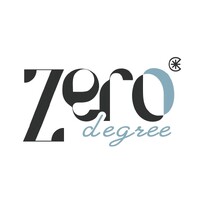


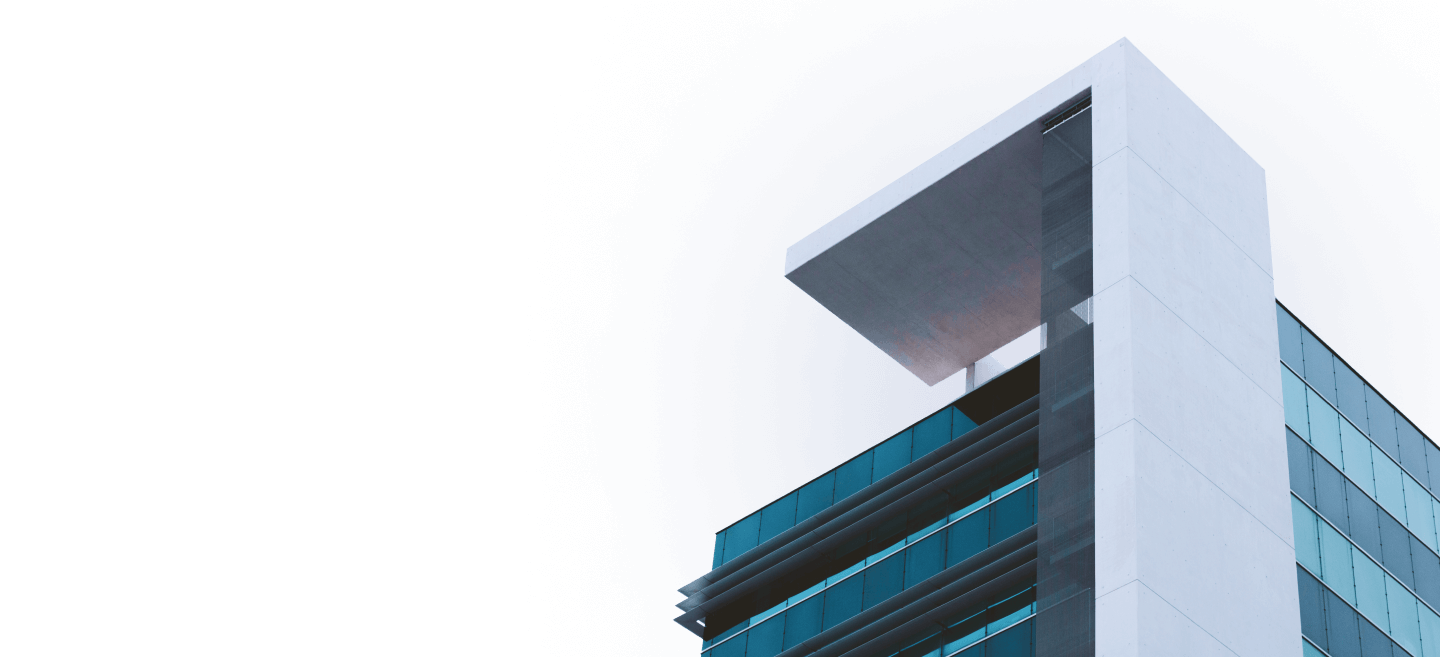
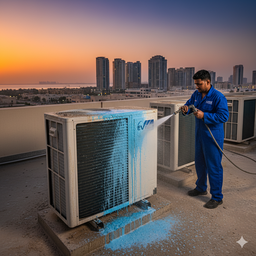
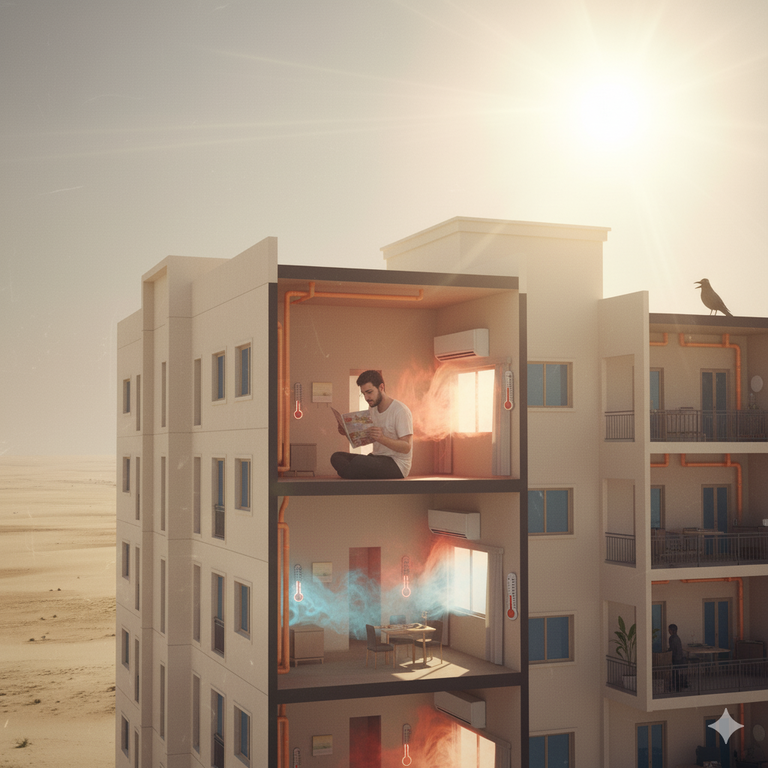
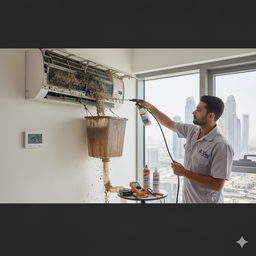
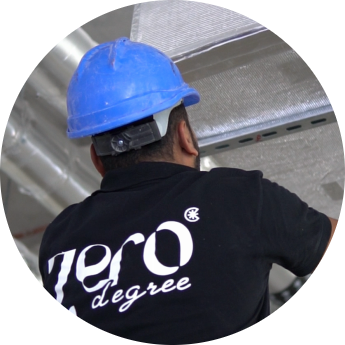
Leave a Reply